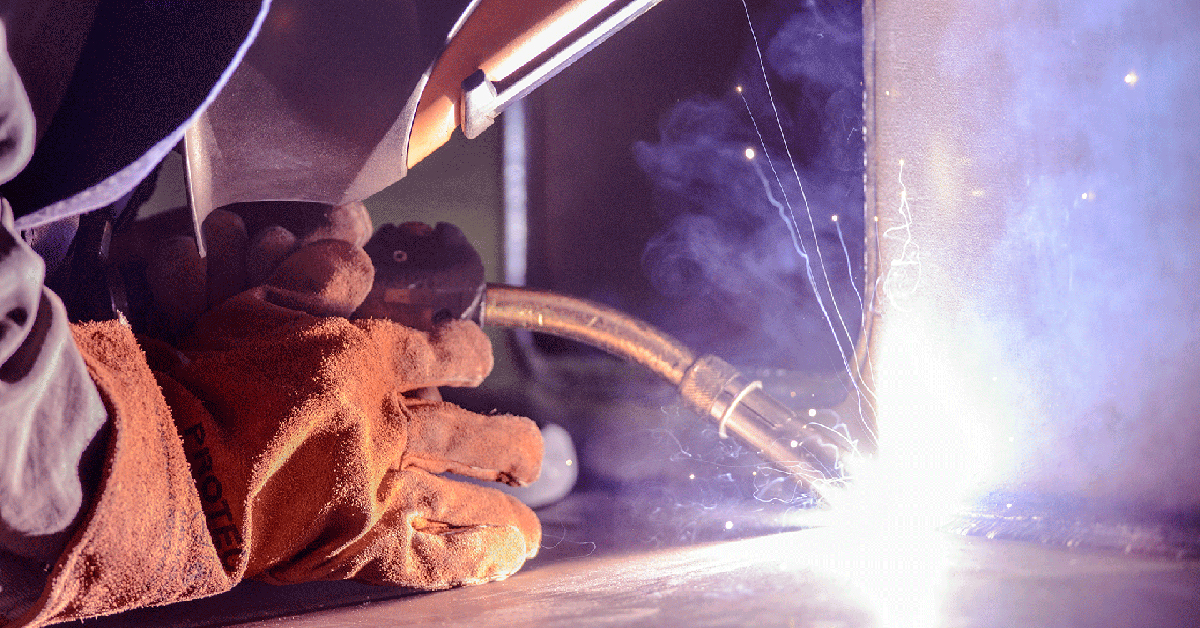Preventing Weld Undercut: Proven Techniques Every Welder Ought To Know
Preventing Weld Undercut: Proven Techniques Every Welder Ought To Know
Blog Article
Recognizing the Causes and Solutions for Undercut Welding in Steel Manufacture Procedures
In the world of steel manufacture procedures, the incident of undercut welding presents a considerable difficulty that demands an extensive understanding of its causes and feasible solutions. The intricate interaction of different variables throughout welding operations can result in this undesirable phenomenon, impacting the architectural honesty and general high quality of the welded joints - Preventing weld undercut. By studying the source of undercut welding and exploring effective therapeutic procedures, producers can elevate the criterion of their workmanship and ensure the manufacturing of flawless steel parts
Common Root Causes Of Undercut Welding
Regularly forgotten in metal manufacture, undercut welding takes place due to numerous elements that require thorough interest and knowledge to be efficiently minimized. One typical root cause of undercut welding is extreme warmth input. When the warm input is too high, it can bring about the melting and succeeding erosion of the base product along the edges of the weld joint, producing a groove or undercut. Additionally, incorrect welding techniques, such as utilizing the incorrect welding angle or travel rate, can also add to damage formation. Poor shielding gas insurance coverage is another crucial factor that can lead to damaging. Not enough gas protection falls short to protect the weld pool properly, causing oxidation and undercut defects. Additionally, the selection of welding parameters, such as voltage, present, and cord feed speed, plays a considerable duty in the occurrence of undercut welding. Recognizing these common causes is important for applying preventive steps and making certain high-quality welds in metal construction processes.
Influence of Incorrect Welding Parameters
Inaccurate welding specifications can substantially jeopardize the honesty and high quality of bonded joints in metal fabrication processes. The effect of inaccurate welding specifications shows up in various ways, leading to structural weak points and flaws in the bonded parts. Meticulous attention to welding parameters is vital to make certain the manufacturing of high-quality welds with the desired mechanical homes and structural stability.
Impact of Improper Torch Angle
Improper lantern angle in welding procedures can considerably impact the top quality and honesty of the final weld joints in metal manufacture processes. Damaging is a typical welding problem where a groove forms along the weld toe, damaging the joint and jeopardizing its structural honesty.
A torch angle that is too high can bring about inadequate penetration, insufficient combination, and enhanced spatter. On the various other hand, a lantern angle that is too superficial can lead to excessive infiltration, burn-through, and distortion of the base product. Preventing weld undercut. Correct torch angle is important for ensuring regular weld quality, toughness, and top article appearance
To prevent damaging and other issues triggered by inappropriate torch angles, welders have to be trained to keep the right torch angle throughout the welding process. Normal tracking and adjustment of torch angles throughout welding can help accomplish sound welds with very little defects.
Function of Inadequate Welding Strategies

One more aspect of inadequate welding techniques is inappropriate weld prep work. Poor cleansing of the base metals, wrong joint layout, or not enough side preparation can all contribute to damage welding. Poor protecting gas coverage or using the incorrect type of gas can result in incomplete blend and the formation of undercut defects.
To resolve the function of poor welding methods in metal manufacture processes, it is necessary to provide thorough navigate here training for welders. Appropriate education on welding criteria, joint preparation, and securing gas choice can aid browse around this web-site stop undercut welding and make certain top notch welds in metal manufacture jobs.
Reliable Solutions for Undercut Welding
Dealing with undercut welding in steel construction calls for carrying out effective options to enhance weld high quality and architectural honesty. One of the key services to battle undercut is to adjust welding criteria such as voltage, current, and travel rate to guarantee correct heat input and combination. By fine-tuning these setups, welders can prevent extreme melting of the base steel and filler material, minimizing the chance of undercut formation.
Furthermore, correct joint preparation is vital in preventing undercut. Guaranteeing tidy base steel surfaces devoid of contaminants and utilizing the ideal bevel angle can help promote far better weld penetration and minimize the threat of undercut - Preventing weld undercut. Employing suitable welding methods, such as oscillating the lantern or weaving, can also aid in dispersing warmth equally and loading the weld joint sufficiently, lessening the opportunity of undercut issues
In addition, selecting the correct welding consumables, including electrodes and filler metals, is vital in alleviating undercut. Making use of materials with proper chemical make-ups and mechanical residential or commercial properties can contribute to attaining sound welds with minimal undercut. Routine examination and high quality control steps must also be executed to find and attend to undercut concerns without delay, making certain the overall honesty of made steel components.

Conclusion
To conclude, recognizing the reasons and options for undercut welding in metal fabrication procedures is critical for accomplishing top notch welds. By attending to common reasons such as wrong welding parameters, improper lantern angle, and insufficient welding techniques, welders can prevent damaging and guarantee strong, sturdy welds. It is important to focus on these factors and apply efficient solutions to enhance the overall welding procedure and end product high quality.

Report this page